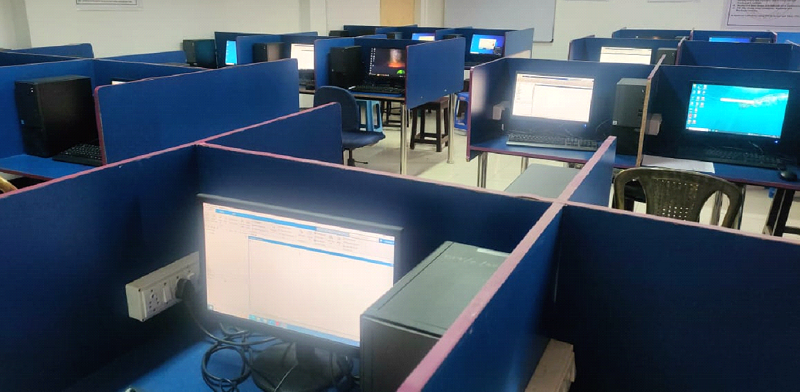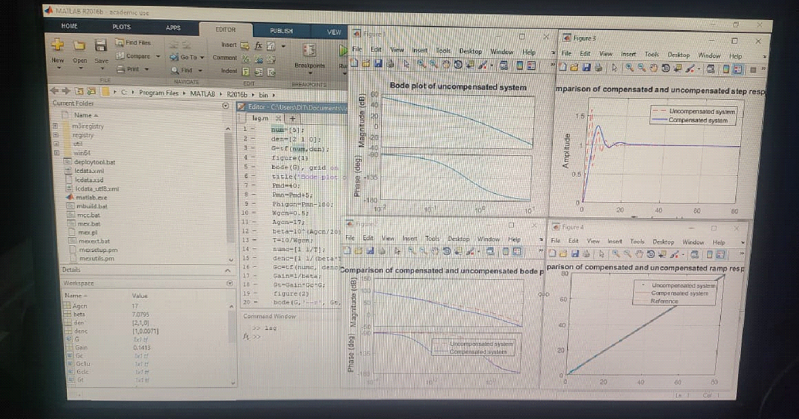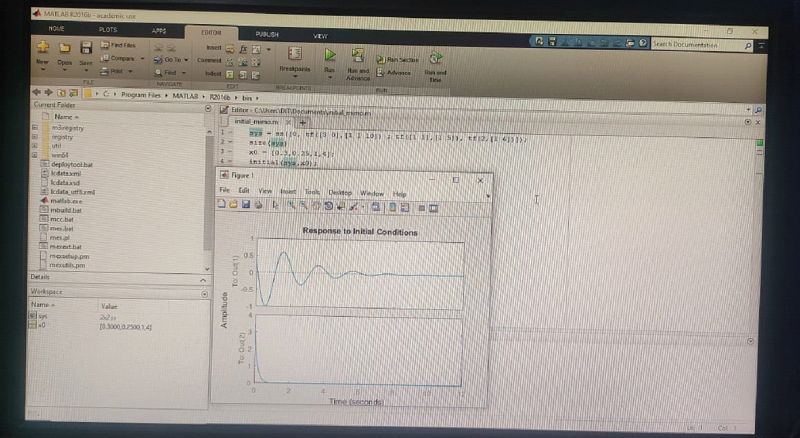| DEPARTMENT |
NAME OF THE SUBJECT WITH COURSE CODE |
SYLLABUS (NEW/OLD) |
YEAR & SEMESTER |
| EE |
CONTROL SYSTEM LABORATORY (PC-EE 593) |
NEW |
3rd year 5th Sem (UG) |
Objective:
The main objective of the Control System Laboratory is to introduce and enhance the knowledge and learning experience of students in topics encountered in Control Systems using advanced software tools like MATLAB which provide paths towards the engineering applications.
Some specific course objectives include:
- • Students will have a strong knowledge on MATLAB software.
- • Students will study the concept of time response and frequency response of the systems.
- • This course aims to familiarize the students with the modelling of dynamical systems, to simulate and analyse the stability of the system using MATLAB software.
- • Students will be able to analyse the physical systems represented in transfer function.
- • Students will be able to design controllers, compensators etc. using MATLAB software.
Overall, the Control System Laboratory aims to equip students with the practical skills and knowledge necessary to excel in the broad field of control system and related areas.
Course covered in this Laboratory: CONTROL SYSTEM LABORATORY (PC-EE 593)
Course Syllabus
The experiments performed in the control system laboratory are listed below.
- • Familiarization with MAT-Lab control system toolbox, MATLAB Simulink toolbox.
- • Determination of Step response for first order & Second order system with unity feedback & calculation of control system specification, Time constant, % peak overshoot, settling time etc. from the response.
- • Simulation of Step response & Impulse response for type-0, type-1 & Type-2 system with unity feedback using MATLAB.
- • Determination of Root locus, bode plot, Nyquist plot using MATLAB control system toolbox for a given system & stability by determining control system specification from the plot.
- • Determination of PI, PD and PID controller action of first order simulated process.
- • Determination of approximate transfer functions experimentally from Bode plot.
- • Evaluation of steady state error, setting time, percentage peak overshoot, gain margin, phase margin with addition of Lead, Lag, Lead-lag compensator.
- • Study of a practical position control system obtaining closed step responses for gain setting corresponding to over-damped and under-damped responses. Determination of rise time and peak time using individualized components by simulation. Determination of un-damped natural frequency and damping ratio from experimental data.
- • Analysis of performance of Lead, Lag and Lead-Lag compensation circuits for a given system using simulation.
- • Determination of Transfer Function of a given system from State Variable model and vice versa.
- • Analysis of performance of a physical system using State variable technique by simulation. Study of step response and initial condition response for a single input, two-output system in SV form by simulation.
Course Outcomes: After completion of this course, the learners will be able to
- Identify the appropriate programming tools and software models for the experiment.
- Validate the programs and models for application to the experiment.
- Construct circuits with appropriate software tools.
- Use MATLAB control system toolbox, MATLAB Simulink toolbox for simulation of systems.
- Determine control system specifications of first and second order systems.
- Validate step response & impulse response for type-0, type-1 & Type-2 system with unity feedback using MATLAB.
Facilities available in this laboratory:



